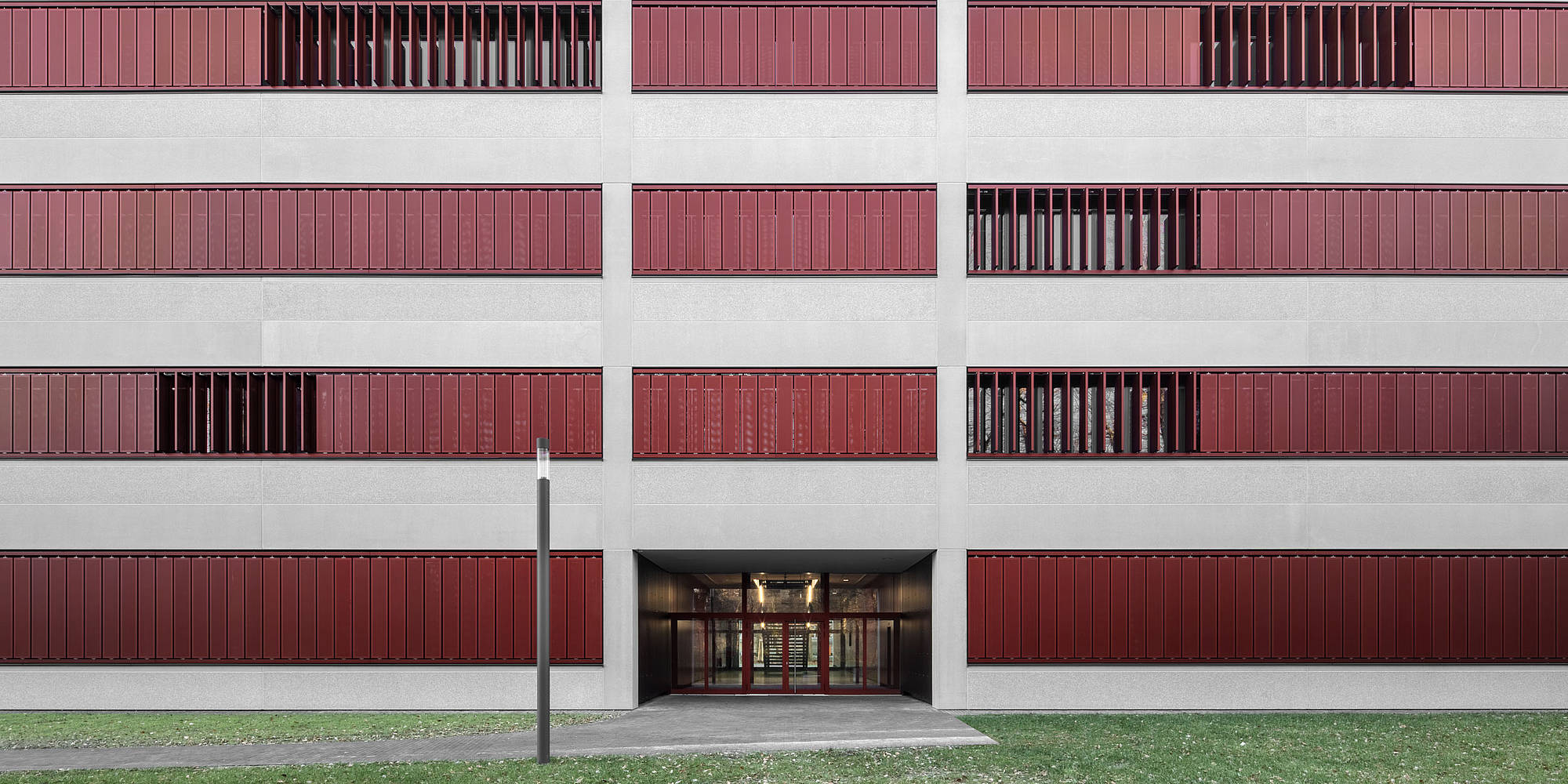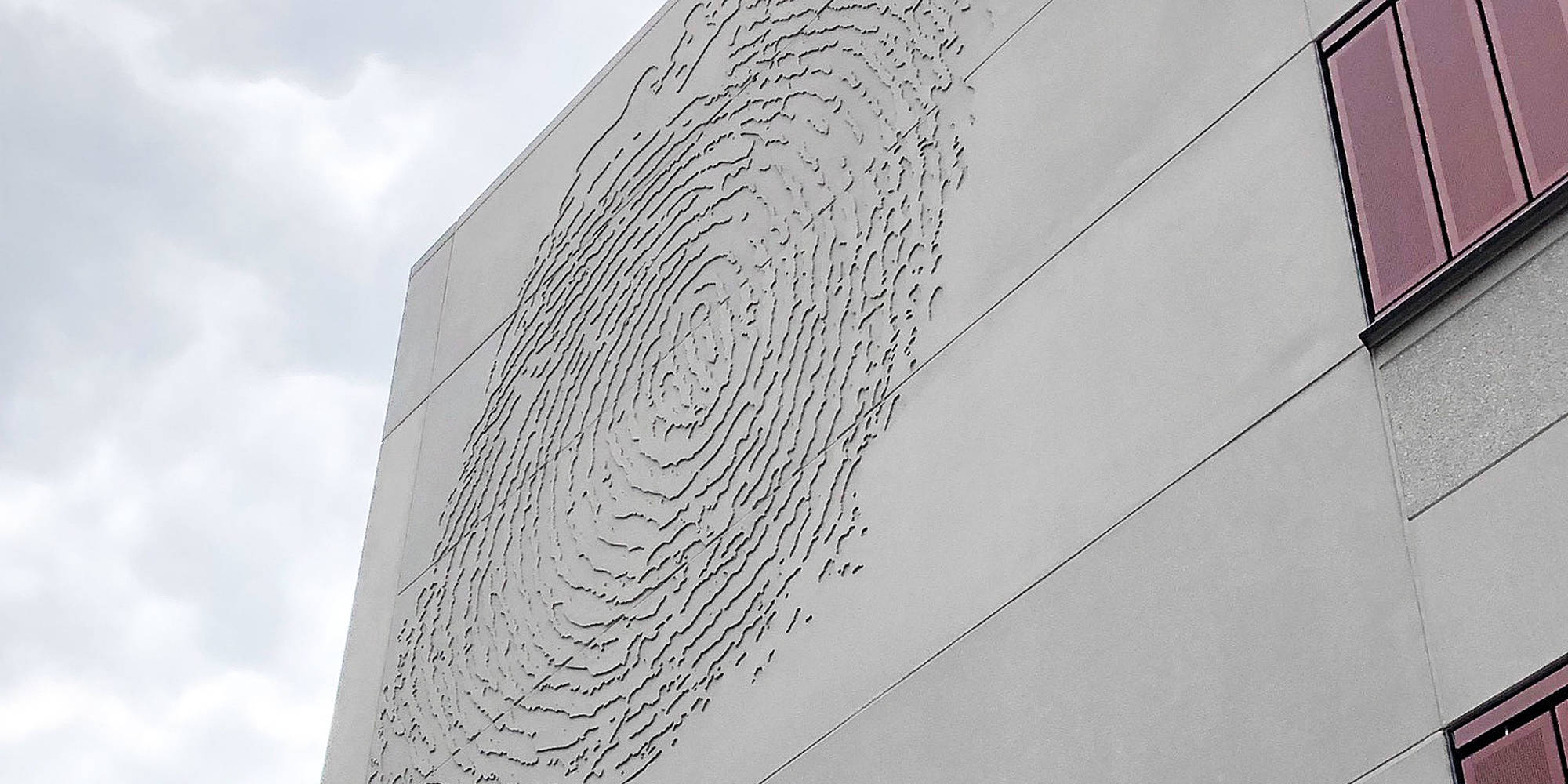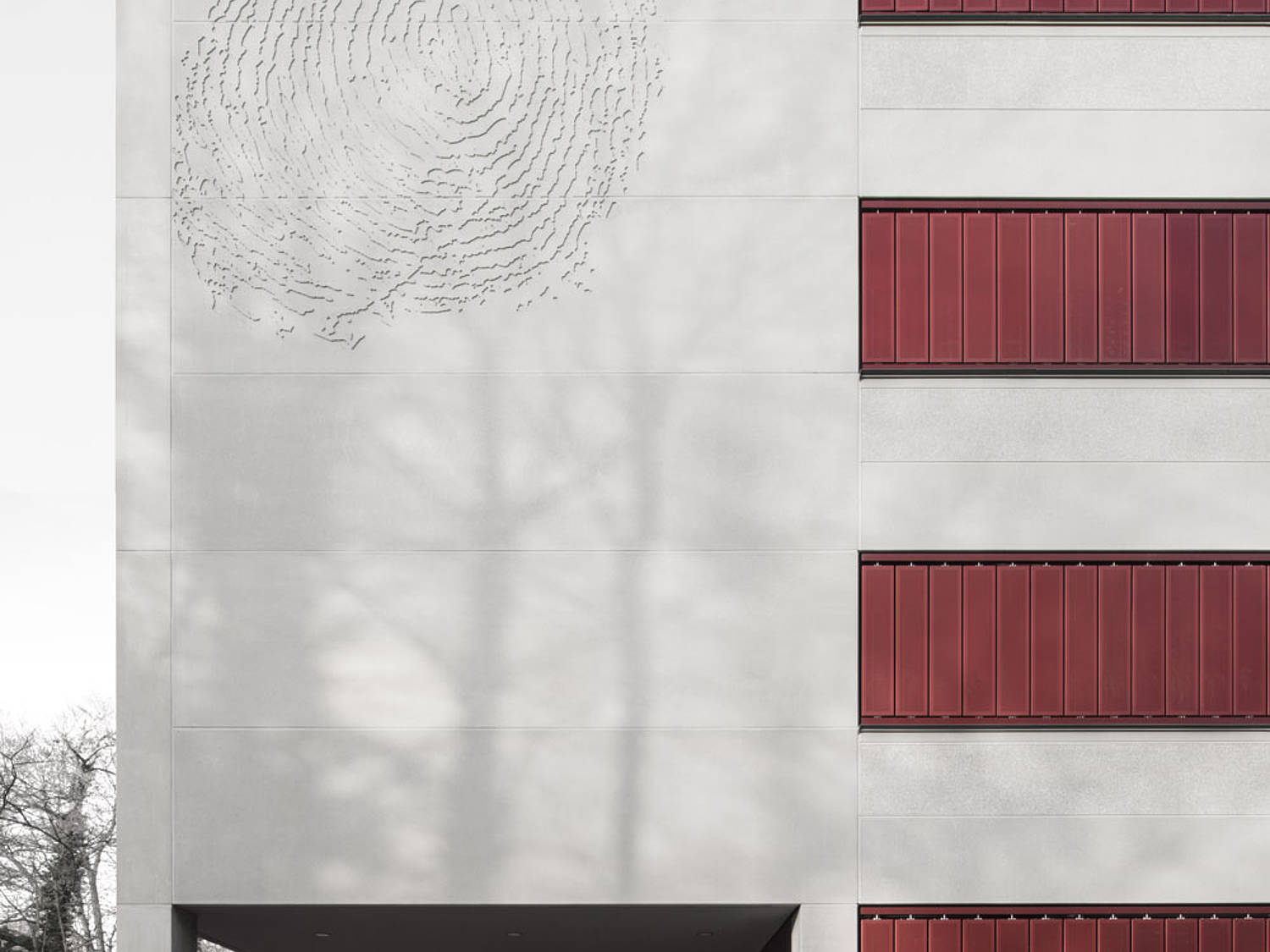Building N, University of Applied Sciences, Karlsruhe, Germany
Architects and a sculptor have left a special mark on the new building at Karlsruhe University of Applied Sciences: a big finger print adorns the facade.
Karlsruhe University of Applied Sciences could begin using its new lecture and seminar building in time for the start of the winter term 2018/19. The new building for the Department of Sensor Technology replaces a building on the campus which could no longer be renovated and provides a 3800m2 space for staff and students. “The seminar and laboratory building ‘N’ is another element in the development of our university campus,” said Professor Robert Pawloswski at the official presentation of the building in June 2018.
Planning and realization of the new build was carried out by the Leipzig firm Schulz und Schulz Architects. The planners were inspired by the surrounding reinforced concrete structures on the campus and transferred their look from the 1960s/70s to a modern building. A light grey rectangular monolith greets the viewer. A large ground-flour undercut opens into the entrance. A large finger print directly above it leads the eye towards the façade and serves as a reference to the building’s use by the Department of Sensor Technology.
The motif was chosen as part of a ‘Kunst am Bau’ (Art in Architecture) competition. “The brief was to design or alter- in any way the artist chose- precast concrete parts on the east side above the entrance area,” said Felix Haunstein, architect at Schulz und Schulz. The artist Jörg Mandernach from Ludwigsburg heard about the competition from the Office of Assets and Construction Baden-Württemberg and drew inspiration from the function of the building. “It happened very quickly. Once I’d read the competition brief, the finger print motif was my first idea,” says the sculptor.


After winning the competition, he directly approached the architects. “After he was commissioned, Mr Mandernach asked us to support him with implementation and communication with the construction firms and to advise him, which we were happy to do, because we were impressed by his design for the artwork and keen to ensure it would be implemented to a high quality,” says Haunstein. Schulz und Schulz Architects knew about the design possibilities of elastic formliners and were familiar with RECKLI’s products. “But it was the first time that we actually worked with formliners. From the outset RECKLI gave us constructive support and advice.
The team prepared a vector file of the planned finger print and sent it to RECKLI. The finger print would span four precast concrete parts, so it was divided into four sections and four individual formliners were produced in the factory in Herne. RECKLI delivered the prepared molds direct to the precast concrete parts factory Allton in Henningsdorf. They produced the acidified concrete elements for the façade.
Before the precast parts were delivered to Karlsruhe for installation, the architects went with the artist Mandernach to the factory to approve them. “It was definitely a challenge that the finger print was very fragile in places, so we wanted to make sure there were no breakages when it was removed from the mold,” says Haunstein. Because of their elasticity, RECKLI formliners accurately model the details of even intricate structures and can be removed easily without broken edges once the concreate has hardened. While Mandernach looked at the detailed formulation and quality of the finger print, the architects also checked the quality of the acidified surface and its color. “We were really pleased with the result and the precast parts could be transported to Karlsruhe and finally mounted,” says Haunstein.
Mandernach, the ultimate artist, wants to let viewers judge the finished artwork on the façade. One thing he does reveal though: the finger print does not belong to a particular person.
